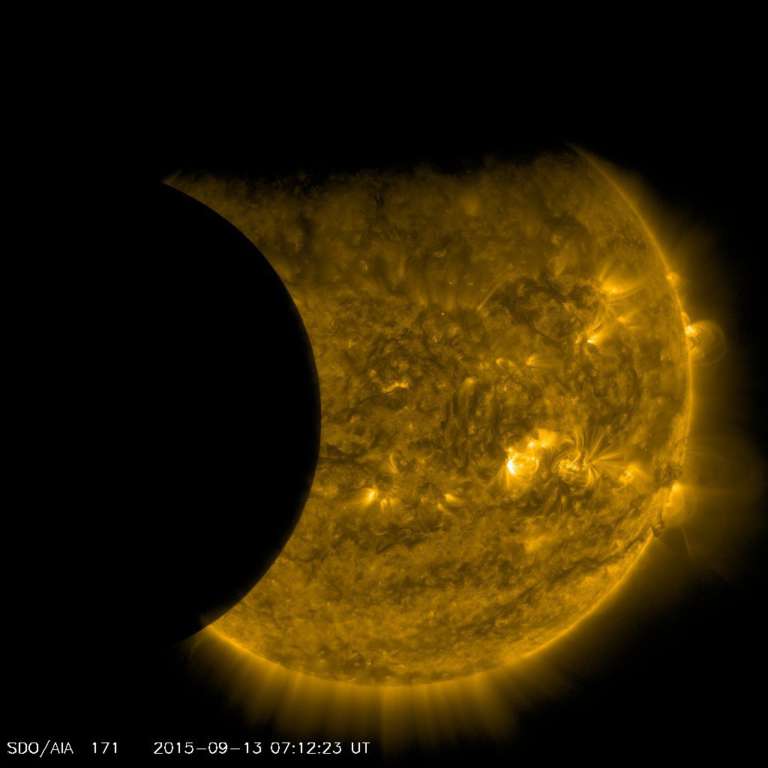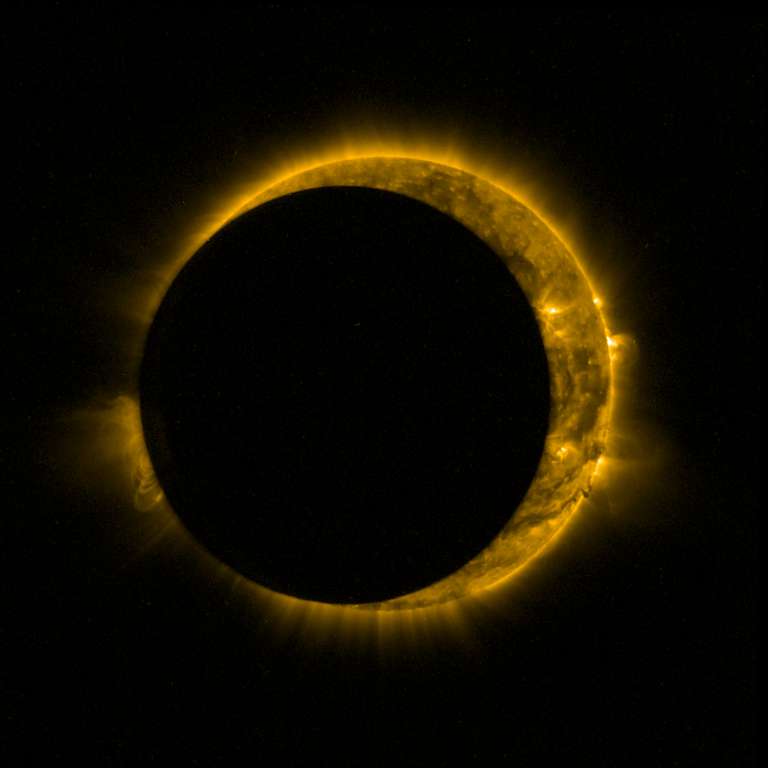Jason Davis • Sep 15, 2015
In Pictures: A Partial Solar Eclipse from Space
A few members of Earth’s sun-observing spacecraft fleet experienced a minor service interruption Sunday morning.
During a partial solar eclipse that peaked around 7:00 UTC, the moon crossed between Earth and the sun, throwing a shadow on a region extending from southern Africa to Antarctica. Two sun-observing spacecraft in Earth orbit captured the event: NASA’s Solar Dynamics Observatory (SDO) and the European Space Agency’s Proba-2.
At the time of the partial eclipse, the moon was near apogee, its farthest distance from Earth. "The Moon will appear to be a little smaller than average so a total solar eclipse is not possible this month," wrote Dean Pesnell on NASA’s SDO blog before the event.
Here's what the eclipse looked like to SDO:

And here was the view from ESA's Proba-2:

Proba-2 partial solar eclipses The European Space Agency's Proba-2 sun-observing satellite captured three partial solar eclipses on Sept. 13, 2015.Video: ESA / Royal Observatory of Belgium
Let’s Go Beyond The Horizon
Every success in space exploration is the result of the community of space enthusiasts, like you, who believe it is important. You can help usher in the next great era of space exploration with your gift today.
Donate Today

 Explore Worlds
Explore Worlds Find Life
Find Life Defend Earth
Defend Earth

